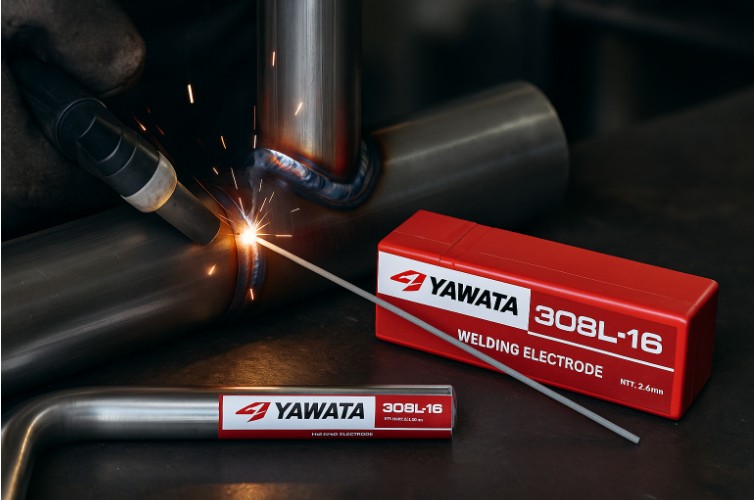How to Select the Right Stainless Steel Welding Wire for Heavy-Duty Construction

In the land of serious construction, precision and durability are never up for debate. Whether you are fabricating structural components, like frames, or building high-stress industrial machines, the process of building anything requires a great deal of planning and a good choice of materials to be certain that it stands the test of time. The * ลวดเชื่อมสแตนเลส YAWATA 308L-16 * (stainless steel welding wire) is one of the most important components in welding. Selecting the right type of wire for a successful weld can have a direct impact on weld strength, corrosion resistance and weld performance. This article will serve as a guide in helping construction professionals and engineers choose the best stainless steel welding wire to use for their heavy duty welding needs.
Stainless Steel Welding Wire a Brief Overview
ลวดเชื่อมสแตนเลส is used to weld all stainless steel car, it supplies clean, very porous stainless welds with corrosion resistance. These qualities are especially important for industrial strength applications because of extremely heavy load-bearing capabilities and exposure to offshore conditions. Whether it’s for general construction, nuclear, shipbuilding, oil- gas, or any other industrial application, you need the right wire to get the job done.
Important Parameters to Consider When Selecting Stainless Steel Welding Wire
1. Match Base Metal Composition
There is one overarching rule when selecting welding wire and that’s that it should be as close to the base metal you’re welding as possible. There are many different kinds of stainless steel (a few common ones would be 304 316 309) and they are all going to need a specific type of filler metal. For example:
- Use ER304L for welding 304 or 304L stainless steel.
- ER316L is for 316 or 316L steel.
Selecting the proper match of weld in order to assure a corrosion resistant bond and that the weld will perform as well or in some cases better than the base metal, assures that a weld will not fail.
2. Determine the Welding Process
The welding style you are using also affects the type of ลวดเชื่อมสแตนเลส you choose. The Most Common Process Three prime procedures are:
- MIG (Metal Inert Gas) Welding: Uses solid-stainless steel wire and is best for fast, square, clean welds in indoor environments.
- TIG (Tungsten Inert Gas) Welding: Wire welds don’t work here, so you’ll use rods, but is very precise and good for thin or important parts.
- Stick Welding (SMAW): Electrode with flux coating, less affected by wind and dirty environments), best for strong or repair welds on tough steel.
Both the processes require a certain wire or rod, for which you really need to know what process you prefer, so you can make the right choice.
3. Consider Environmental Conditions
Work sites that can take a dangerous environmental toll on tools, look to RIDGID heavy-duty construction tools. In that case, resistance to corrosion of the welding wire in stainless steel plays an important role. For instance, ER316L wire has better resistance to chlorides and is suitable for use in coastal or marine environments. Always evaluate the environment you are working in before you choose your wire.
4. Evaluate Mechanical Requirements
For some applications, high tensile strength is vital, for others: ductility or impact resistance. Not all ลวดเชื่อมสแตนเลส wires are equal—some are better to be incredibly strong, others are better suited to making your life easier while welding. Check Your Project’s Mechanical Characteristics Compare with Wire Properties Such As:
- Yield strength
- Elongation percentage
- Toughness at low temperatures
5. Look for Certifications/Quality Standards
In case of processes and applications demanding certified and high-quality wires. “Look for wires that conform to standards like AWS (American Welding Society), ISO or DIN.” Wires are certified; quality high, safe and in conformity with the built-in regulation. Reputable suppliers and manufacturers always include good literature with their items.
Common Mistakes to Avoid
If you’re choosing * ลวดเชื่อมสแตนเลส * for heavy construction, you want to make sure to avoid falling into these common pitfalls:
- Ignoring the compatibility of filler metal: The use of non-compatible filler metal with the base metal can cause cracking or corrosion of the weld.
- Failure to consider service conditions: Misapplication will lead to reduced service life if the wrong grade is used in a corrosive environment.
- Using low-quality wire: An inferior grade of wire can contain higher levels of impurities which can adversely impact weld integrity.
- Not properly cleaning pre-weld: Dirt, oil, and other contaminants can result in poor furnace welds or even weld porosity.
Taking the time to find the right giver will help avoid expensive rework as well as safety risks.
Final Thoughts
Selecting the best ลวดเชื่อมสแตนเลส for an intense construction is not about Campbell making it with your way is a practical choice that sets in motion the solidity, permanence, and robustness of your last set up. Through choosing compatibility with base metal, welding process, environmental consistency and mechanical requirements, then you will avoid a safe and successful project code.
Work with a good supplier and refer to Material safety data sheets (MSDS) and to your welding procedure specification (WPS) to know what you are doing. When it comes to a variety of wine and food applications, you have several choices, to help you get the best results at the best price with the best stainless steel for wine, beer, food processing and storage, choose the right ลวดเชื่อมสแตนเลส (stainless steel welding wire) for the job.




